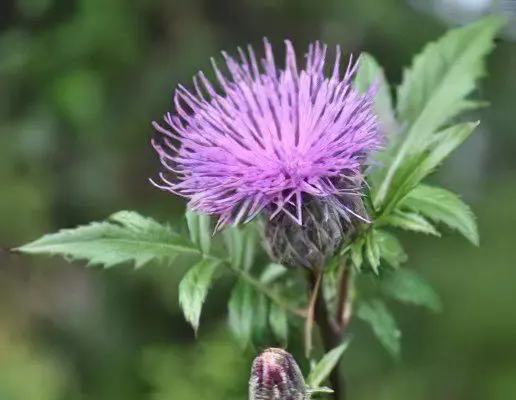Contents
Useful properties and use of crowned serpuhi
Botanical characteristics of Serpuhi

Serpukha has a strong erect stem, the height of which can be from 50 to 110 cm. Such a herbaceous plant with regular ovate leaves and oblong edges boasts elegant flower baskets. They are quite large, located at the very ends of the stems and have a lilac-purple hue. Serpuha blooms around July and August, bears fruit with smooth brownish achenes. She is considered an excellent honey plant.
This plant is widely distributed in the forest-steppe zone of the Far East and in Siberia. This grass prefers forest edges and birch pegs.
Useful properties of serpuhi
Serpukha contains a huge amount of traces of alkaloids, as well as ascorbic acid. It is recommended to take it for various stomach and heart diseases, for anemia and jaundice, as well as for all kinds of neuroses. It has a mild astringent and choleretic effect on the human body. It should also be noted that the plant has long been used as an anti-febrile, antiemetic, anti-inflammatory and sedative.
The use of sickle
To prepare the infusion of serpuhi, it is advised to take no more than 2 cups of boiling water for 1,5 teaspoons of well-dried herbs. Such an exceptional remedy should be infused for about three hours, after which it is recommended to carefully strain it and you can drink 3 or 4 times a day, 1 tablespoon.
Such an infusion of sickle is indicated for rinsing a sore throat with tonsillitis and other inflammatory processes.
Serpukha crowned
Serpukha crowned is a herbaceous perennial plant, the height of which does not exceed one meter. Each deeply pinnate leaf has pronounced oblong lobes with rather large, sparse teeth. Large flower baskets of a bright red hue are located in several pieces at the ends of the stems. Serpuha crowned blooms in mid-July and August. It can often be found in the vastness of the Caucasus, in Central Asia, in the Crimea, as well as in Siberia and the Far East.
Serpukha Donskaya
Serpukha Donskaya is an unusual short-rhizome perennial. This species prefers meadow grassy steppes and mountain slopes, and also gravitates towards gravelly soils and upland edges.
Serpukha Donskoy has a powerful erect stem, regular oblong leaves and rather large lilac flower baskets. Such a herbaceous plant is widespread in Russia, Ukraine, and also in the Caucasus. Don Serpukha blooms in the first half of summer, from May to July.
Serpuha dyeing
Serpukha dyer delights with its ovoid-cylindrical flower baskets, which are collected in common corymbose-paniculate inflorescences. The dark purple flowers are about 6 mm in diameter. The alternate leaves are oblong-lanceolate or lyre-shaped. The height of the dyeing sickle can reach 90 cm. At the same time, the upright stem of the plant is quite strong and branched. The short rhizome is complemented by cord-like lateral roots. The fruit is represented by a grayish achene with a yellowish tuft.
Dyeing serpukha blooms all summer, and the seed-fruits ripen at the very beginning of autumn. This perennial plant lives on the edges, clearings, in forests and thickets of shrubs. It is common in the Central part of Russia.
Contraindications to the use of serpuha
To date, no contraindications have been identified for the therapeutic use of Serpuhi.









